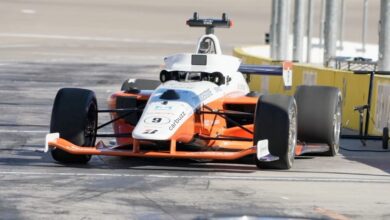The Invisible Car: How Nissan’s Ultra-Camouflage Tech Works

Imagine a car that disappears before your eyes—not with magic, but with cutting-edge optical camouflage. Nissan has developed a mind-bending technology called “Invisible-to-Visible” (I2V) that blends augmented reality, projection systems, and real-time data to make vehicles appear partially transparent.
But how does it actually work? And could this tech go beyond prototypes to revolutionize driving safety and design? Let’s pull back the curtain on Nissan’s disappearing act.
How Nissan’s “Invisible Car” Illusion Works
Nissan’s system isn’t true invisibility (yet), but rather an augmented reality trick that makes the car’s interior appear see-through. Here’s the breakdown:
1. Camera & Sensor Network
- Exterior cameras film the surroundings in real time.
- Interior projectors display that footage inside the car.
- Transparent OLED panels on seats and pillars enhance the effect.
2. The “See-Through A-Pillar” Trick
Traditional A-pillars (the front roof supports) create dangerous blind spots. Nissan’s system:
✔ Projects the hidden view onto the pillars, making them “disappear.”
✔ Uses AI to track driver eye movement for perfect alignment.
3. Full-Vehicle Camouflage (For Testing)
Nissan also uses light-bending vinyl wraps on prototypes:
- Reflective panels mimic the opposite side of the car.
- Real-world testing becomes harder for spies to photograph.
Why Build an “Invisible” Car?
✅ Safety Benefits
- Eliminates blind spots (A-pillars, rear visibility).
- Holographic AR alerts warn of hidden pedestrians/cyclists.
✅ Design & Testing Advantages
- Camouflaged prototypes hide new designs from competitors.
- Virtual wind tunnel testing with projected airflow visuals.
✅ The Future of “Transparent” Driving
Nissan’s long-term vision includes:
- Full AR windshields showing hazards, navigation, and even “X-ray” road views.
- Vehicle-to-everything (V2X) integration—seeing through other cars in traffic.
Is This Tech Coming to Production Cars?
- 2025+: Partial implementations (see-through A-pillars, AR HUDs).
- 2030s: Full “invisible mode” for parking/urban driving.
The Competition: Who Else Is Working on Invisibility?
- Toyota: Patent for light-bending cloaking devices.
- BMW: Augmented reality windshield that “erases” other cars.
- Mercedes: Transparent hood tech for off-roading.
Final Verdict: Gimmick or Game-Changer?
While full invisibility remains sci-fi, Nissan’s AR-enhanced transparency could save lives by eliminating blind spots—making it one of the most practical (and coolest) safety innovations in decades.
Would you trust an “invisible” car? Or is this tech too distracting? Sound off in the comments! 👁️🚗💨





